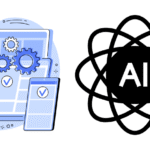
Why Choose to Develop a Cross-Platform App? To save time, reduce cost, and reach a wider audience with your digital product, that’s why
The App World: A Lay of the Land
Every tech leader with a visionary outlook comprehends the need for mobile app presence in today’s digital era. Yet, when you decide to craft that all-important app, many questions arise. Is iOS the way to go, or should Android be your platform of choice?
Perhaps both? The answer lies in understanding the digital landscape of today’s app world.
Addressing Doubt: The Android vs iOS Conundrum
Android holds the highest global market share, with iOS following closely. Each has its strengths and peculiarities, making it challenging for businesses to choose one. A common mistake I’ve seen is thinking in a binary, either-or framework. Enter, cross-platform development.
Expert Quote:
“Cross-platform app development isn’t about choosing between Android and iOS. It’s about realizing you can have the best of both worlds.”
Key Takeaway:
Understanding your user base and their preferences is the first step in addressing doubts about app development strategy.
Embracing the Cross-Platform Strategy
The beauty of cross-platform development lies in its ability to bridge the Android-iOS divide. By using a single codebase, you can build applications that run seamlessly on both platforms. The result? A wider reach and unified user experience.
Pro Tip:
When considering a cross-platform strategy, invest in a detailed user analysis. Understanding your user demographics, preferences, and behavior will drive your development approach.
Best Practices in Action
Let’s discuss some best practices with real-life examples and solidify our understanding of cross-platform development.
- Reusability of code: Netflix uses a unified codebase for its Android and iOS apps, allowing for more efficient development and maintenance.
- Consistency in UI/UX: Airbnb maintains a consistent user interface and experience across its iOS and Android apps, fostering brand loyalty and user satisfaction.
- Rapid app development and deployment: UberEats successfully leveraged cross-platform technology to quickly roll out its app across numerous markets.
Code Sample: React Native
Consider React Native, a popular choice for cross-platform development. Here’s a simple example of a code snippet that renders “Hello, Cross-Platform World!” on both Android and iOS.
import React from 'react';
import { Text, View } from 'react-native';
const HelloWorldApp = () => {
return (
<View style={{ flex: 1, justifyContent: 'center', alignItems: 'center' }}>
<Text>Hello, Cross-Platform World!</Text>
</View>
);
}
export default HelloWorldApp;Key Takeaway:
Cross-platform development practices, when executed well, can result in efficient, consistent, and quick app deployment.
Doubts Be Gone: Embrace the Future
Cross-platform development offers a new way to navigate the app world. It addresses the Android vs iOS question, provides best practices, and gives businesses the tools they need to succeed in a mobile-centric world. It’s about time we drop our doubts and embrace this transformative approach.
Pro Tip:
Stay updated with the latest cross-platform frameworks, like Flutter and React Native. Regularly updating your skills and knowledge will help you leverage the best that cross-platform development offers.
With a solid grasp of the digital landscape and best practices, anyone can navigate the app world successfully. So, let’s embrace the cross-platform way and maximize our reach in the dynamic digital ecosystem.
Making Financial Sense – Why Choose to Develop a Cross-Platform App

Budgets. For CEOs, CTOs, and engineering managers, it’s that ever-looming term that can make or break a project. Especially when it comes to app development, resources can quickly dry up. Navigating the app world need not deplete your wallet, though. That’s where cross-platform development shines.
Addressing Doubts: A Cost Comparison
Let’s not beat around the bush. Developing separate applications for Android and iOS can cause expenses to skyrocket. Picture this: two different codebases, two teams working in tandem, and, of course, twice the time. That’s a pricey affair.
Expert Quote:
“As a cross-platform developer, I’ve seen how it allows us to do more with less. It’s not just about saving money; it’s about making every dollar count.”
Key Takeaway:
Developing separate apps for each platform can strain budgets, making cross-platform development a cost-effective alternative.
Understanding Cross-Platform Development Costs
When you opt for cross-platform development, you write your code once, and it runs on both Android and iOS. It reduces development time, demands less workforce, and simplifies maintenance.
A study by Research2guidance indicated that cross-platform development could cut costs by up to 30% compared to native development. That’s a considerable chunk of change.
Pro Tip:
Always perform a thorough cost analysis before starting any app development project. It includes not only development costs but also maintenance and future updates.
Best Practices in Action: Financial Wisdom
Here’s how embracing cross-platform development can drive cost efficiency, demonstrated by real-life examples:
- Savings on Development Costs: Facebook switched to cross-platform for their Ads Manager app, resulting in a smaller team and reduced development time.
- Efficient Maintenance: Microsoft Office leverages a unified codebase for its mobile apps, resulting in efficient and cost-effective maintenance.
- Streamlined Updates: By using a cross-platform strategy for their mobile app, Alibaba was able to streamline updates, saving both time and resources.
Key Takeaway:
Cross-platform development can lead to considerable savings, more efficient maintenance, and streamlined updates.
Dispelling Doubts: Making Financial Sense
So, does cross-platform development make financial sense? The evidence points towards a resounding yes. But remember, it’s not just about initial costs. Consider long-term maintenance and updates, too. By making a well-informed decision, you’re not just saving resources – you’re investing in future growth.
Pro Tip:
Keep an eye on your app’s performance and the needs of your users. They will guide your financial decisions.
Being financially savvy is as crucial as technical prowess. And when it comes to fiscal wisdom in app development, cross-platform technology holds a strong hand. Don’t let costs hinder your app’s success. Make cross-platform development your secret weapon.
Consistent User Experience – Why Choose to Develop a Cross-Platform App

User experience is at the heart of any successful app. Inconsistencies between platforms can lead to a fragmented user experience, causing confusion and frustration. With cross-platform development, we can provide a unified, consistent experience across both Android and iOS.
But how does this work, and what are the benefits?
Let’s explore.
Addressing Doubts: Consistency vs. Individuality
A common concern is whether uniformity might overshadow the unique aspects of each platform. However, cross-platform doesn’t mean sacrificing uniqueness. Instead, it provides the ability to maintain consistency while respecting platform-specific guidelines.
Expert Quote:
“Cross-platform development is not about compromising uniqueness for consistency. It’s about harmonizing them.”
Key Takeaway:
Balancing consistency and individuality is crucial in cross-platform development.
User Experience Consistency: The Rationale
A consistent user experience aids in improving user retention and satisfaction. Users can switch between platforms without any learning curve, which leads to a smoother interaction with your app.
Pro Tip:
Remember to conduct user tests on both platforms during development. It ensures your app is not only consistent but also intuitive and user-friendly.
Best Practices in Action
Real-life examples provide a clearer understanding of consistency in user experience:
- Evernote: This note-taking app offers a consistent interface and experience across all platforms, aiding user retention.
- Slack: Despite being a cross-platform app, Slack manages to adhere to platform-specific guidelines, making it easy and intuitive for all users.
Code Sample: Flutter
Flutter, another popular cross-platform framework, provides widgets that automatically adapt their look-and-feel based on the platform.
Here’s a simple example:
import 'package:flutter/material.dart';
void main() => runApp(MyApp());
class MyApp extends StatelessWidget {
@override
Widget build(BuildContext context) {
return MaterialApp(
title: 'Flutter Demo',
theme: ThemeData(
primarySwatch: Colors.blue,
),
home: MyHomePage(),
);
}
}
class MyHomePage extends StatelessWidget {
@override
Widget build(BuildContext context) {
return Scaffold(
appBar: AppBar(
title: Text('Hello, Cross-Platform World!'),
),
body: Center(
child: RaisedButton(
child: Text('Click me!'),
onPressed: () {},
),
),
);
}
}This Flutter code creates a simple app with a button. The look-and-feel of the button will automatically match the platform the app runs on.
Key Takeaway:
A consistent user experience is a linchpin for successful app usage across multiple platforms.
Doubt No More: Embrace Consistency
Developing with cross-platform technology enables a unified user experience without losing platform individuality. No more worries about a fragmented user base or learning curves.
Pro Tip:
Stay aware of UI/UX trends. This awareness can help you keep your app’s user experience current and user-friendly.
Here’s a simple comparison table outlining the benefits of consistent user experience:
| Individual Platform Development | Cross-Platform Development | |
|---|---|---|
| User Experience | Can vary based on platform | Consistent across platforms |
| Development Time | Longer due to separate development for each platform | Shorter due to a single codebase |
| User Satisfaction | Can vary based on the platform | High due to consistency |
Remember, a satisfied user is more likely to be a loyal user. And when it comes to user satisfaction, consistency is king. Harness the power of cross-platform development to provide your users with a seamless experience across all platforms.
Easier Updates and Maintenance – Why Choose to Develop a Cross-Platform App

Let’s shift focus now to the less glamorous, but equally vital, aspect of app development: maintenance and updates. A single codebase is far easier to maintain and update, and that’s exactly what cross-platform development gives you. But let’s dive deeper.
Addressing Doubts: Single vs. Multiple Codebases
One of the common doubts is whether managing a single codebase could be more complex than managing multiple codebases. However, having one codebase to maintain means less time spent hunting bugs in different environments, leading to a more streamlined process.
Expert Quote:
“A single codebase doesn’t mean more complexity, but less. It’s a game-changer in app maintenance and updates.”
Key Takeaway:
Single codebase simplifies maintenance and updates, reducing complexity.
The Power of a Single Codebase
With a single codebase, you apply updates and fix bugs simultaneously for both Android and iOS. It minimizes the risk of inconsistencies and version disparities across platforms.
Pro Tip:
Automate as much of the testing process as possible. It helps to ensure that updates and bug fixes don’t introduce new issues.
Best Practices in Action
Examples from successful cross-platform apps illustrate this principle:
- WhatsApp: The popular messaging app uses a single codebase, ensuring consistent performance and features across platforms, and facilitating faster updates.
- Instagram: By using React Native, Instagram was able to move more of their codebase to a single shared layer, simplifying maintenance and updates.
Code Sample: React Native
React Native’s “Hot Reloading” feature allows developers to see changes as soon as they save. This feature enables quicker iterations during development.
Below is an example of a simple change being made:
import React, { Component } from 'react';
import { Text, View } from 'react-native';
class Welcome extends Component {
render() {
return (
<View>
<Text>Hello, Cross-Platform World!</Text>
</View>
);
}
}
export default Welcome;In this React Native code, changes to the ‘Hello, Cross-Platform World!’ text can be seen immediately, speeding up development and update implementation.
Key Takeaway:
A single codebase significantly streamlines updates and maintenance in cross-platform development.
Shedding Doubts: Embrace Efficiency
With a unified codebase, maintenance becomes less of a chore and more of a well-oiled process. It’s high time we embraced efficiency and made updates and maintenance a breeze.
Pro Tip:
Always thoroughly test your updates before deployment. A broken update can have serious implications for user satisfaction and retention.
Here’s a comparison table outlining the efficiency of a single codebase:
| Individual Platform Development | Cross-Platform Development | |
|---|---|---|
| Update Deployment | Separate updates for each platform | Simultaneous updates for all platforms |
| Bug Fixes | Requires fixing bugs on each platform individually | Bugs fixed once for all platforms |
| Maintenance | Time-consuming due to multiple codebases | Simplified due to a single codebase |
I’ve learned that time saved on maintenance and updates is time that can be spent improving your app in other ways. By leveraging the power of cross-platform development, you’re not just simplifying maintenance; you’re opening up opportunities for growth.
Remember, the less time you spend maintaining your app, the more time you have to innovate.
The Caveats – Why Choose to Develop a Cross-Platform App

While cross-platform development has a multitude of benefits, it’s also important to be aware of its potential challenges.
Addressing Doubts: The Perfect Solution?
Many might see cross-platform as a silver bullet for app development, and while it’s powerful, it’s not without its quirks. The main concerns typically revolve around performance issues, limited access to native APIs, and potential difficulties with customized UI components.
Expert Quote:
“Cross-platform is a robust approach, but not a panacea. Awareness and understanding of its limitations are crucial.”
Key Takeaway:
Understanding the limitations of cross-platform development can help you make informed decisions.
Recognizing The Caveats
While cross-platform development simplifies many processes, it may also impose limitations:
- Performance: Cross-platform apps may not perform as well as native apps due to the extra abstraction layer.
- Native API Access: Full access to all native APIs isn’t always guaranteed.
- Customized UI Components: Designing custom UI components can be challenging, particularly when adhering to the distinct design guidelines of each platform.
Pro Tip:
Keep these limitations in mind while planning your app. Knowing where difficulties might arise will help you prepare and possibly mitigate these issues.
Best Practices in Action
Despite these caveats, successful cross-platform apps have found ways to flourish:
- Airbnb: Even though they moved away from React Native, they recognized its value and created a library for reusable UI components, reducing their workload and circumventing some limitations.
- UberEats: They used a combination of native and cross-platform development to balance performance and productivity, demonstrating a successful hybrid approach.
Code Sample: React Native for Native API Access
Accessing native APIs is possible using React Native’s bridge, as shown in the following code:
import { NativeModules } from 'react-native';
NativeModules.ToastAndroid.show
('Hello, Cross-Platform World!', NativeModules.ToastAndroid.SHORT);This code calls a native Toast module in Android using React Native, demonstrating that native API access is possible in cross-platform development.
Key Takeaway:
Awareness and understanding of the caveats of cross-platform development are key to navigating them successfully.
Conquering the Doubts: Striking a Balance
Informed decisions require understanding both the strengths and weaknesses of your chosen approach. By understanding the potential caveats, you can better prepare and adjust your development strategy.
Pro Tip:
Regularly update your knowledge about cross-platform tools. Many of the caveats are being addressed with each new update.
For a quick reference, let’s compare the caveats of individual platform development and cross-platform development:
| Individual Platform Development | Cross-Platform Development | |
|---|---|---|
| Performance | High | Potentially slightly lower |
| Native API Access | Full | Possible with certain limitations |
| Custom UI Components | Fully customizable | Challenging, but feasible |
Even with its limitations, the advantages of cross-platform development are hard to overlook. I’ve found that understanding these caveats only makes you better equipped to leverage the power of cross-platform development.
It’s all about acknowledging the challenges, planning for them, and turning them into opportunities. Remember, every obstacle is a chance to learn and grow.
Common Problems and Solutions – Why Choose to Develop a Cross-Platform App

While developing a cross-platform app, several challenges might arise.
Performance Gap
Performance is often a concern for cross-platform apps due to the extra layer of abstraction. However, modern tools like React Native and Flutter have significantly closed the performance gap.
Solution: Optimize your code, use native modules where necessary, and take advantage of the performance-enhancing features of your chosen framework.
Code Sample: Code Optimization in Flutter
ListView.builder(
itemCount: items.length,
itemBuilder: (context, index) {
return ListTile(
title: Text('${items[index]}'),
);
},
);This Flutter code uses the ListView.builder function, which lazily loads the list items as they are needed. This greatly enhances the app’s performance.
Pro Tip:
Regularly profile your app and remove unnecessary renders and computations.
Limited Access to Native Features
One potential issue is limited access to all native APIs or device-specific features.
Solution: Use native modules or plugins provided by the framework. If a specific feature isn’t accessible, you can write a native code bridge to integrate it.
Pro Tip:
Keep up to date with the newest framework versions. They often come with increased access to native APIs.
Inconsistent Look and Feel Across Platforms
Ensuring a consistent user experience across different platforms can be challenging due to varying UI guidelines.
Solution: Most cross-platform frameworks offer widgets that automatically adapt based on the platform. For custom UI components, you can use platform-specific code.
Pro Tip:
If the platform-specific look isn’t important for your project, consider designing a unique and platform-agnostic UI.
Complexity in Debugging and Testing
Debugging and testing cross-platform apps can be complex due to the differences in platform behaviors.
Solution: Use robust tools available for these frameworks like Flutter’s Dart DevTools and React Native Debugger. Automated testing can also help ensure the consistent functioning of your app across platforms.
Pro Tip:
Incorporate testing early and often in your development cycle to catch and fix issues promptly.
Learning Curve for Teams
Depending on your team’s background, there might be a steep learning curve associated with the chosen cross-platform technology.
Solution: Invest in training and resources to help your team master the chosen technology. The community and resources around React Native and Flutter are vast and can provide valuable help.
Pro Tip:
Encourage your team to create a small app as a learning project. This hands-on approach will help them understand the technology better.
While these problems can seem daunting, they are manageable with the right approach and expertise. Remember, every challenge offers a chance to learn, and overcoming these can significantly enhance your development skills.
Wrapping Up about Why Choose to Develop a Cross-Platform App
Cross-platform apps have taken center stage. Their advantages are undeniable. Market reach, cost-efficiency, consistent user experience, easier updates, and maintenance – compelling reasons, indeed. Yet, potential downsides exist.
Make an informed choice. Weigh your needs against the benefits and challenges. And always remember, the best strategy is the one that aligns with your business goals and resources.
Key Takeaway:
Consider all angles before deciding on your app development strategy. In many cases, a cross-platform approach offers significant advantages. Yet, a balanced evaluation is key to successful implementation.
Here’s to making wise, informed decisions. After all, we are in the business of turning visions into reality. And sometimes, a well-crafted cross-platform app is the pathway to that reality.
Why Choose to Develop a Cross-Platform App? Opting for cross-platform mobile app development offers unmatched advantages. Businesses can enjoy expedited development timelines and budget-friendly costs, thanks to shared codebases.
What’s more, the process ensures easier deployment across multiple platforms like iOS and Android, offering wider reach. Furthermore, maintenance and updates are streamlined, with changes reflected across all platforms simultaneously.
Together, these factors contribute to bolstered productivity and a higher return on investment (ROI), enabling businesses to thrive in today’s competitive digital landscape.
FAQs – Why Choose to Develop a Cross-Platform App

Let’s address some of the most common questions about cross-platform development.
Is cross-platform development faster than native development?
Yes, it typically is. Since cross-platform development allows you to reuse the majority of your code across different platforms, you save a lot of development time. Plus, it means faster time-to-market for your application.
Expert Tip:
Leverage existing libraries and plugins available with cross-platform tools to speed up the process even further.
Do cross-platform apps provide good performance?
While it’s true that native apps can offer superior performance, modern cross-platform tools like Flutter and React Native are closing the gap. With correct implementation, the performance of cross-platform apps can match closely to native ones.
Code Sample: Flutter for High Performance
import 'package:flutter/material.dart';
void main() {
runApp(const MaterialApp(
home: Center(
child: Text('Hello, Cross-Platform World!', style: TextStyle(fontSize: 30)),
),
));
}Flutter, with its direct compilation to native arm code, ensures that your app runs smoothly and quickly.
Can cross-platform apps access device features?
They can. Cross-platform frameworks provide APIs for accessing device features like the camera, geolocation, and accelerometer, among others.
Expert Tip:
If a specific API is not available, you can write native code and bridge it with your cross-platform code.
Code Sample: Accessing Geolocation in React Native
import * as Location from 'expo-location';
async function getLocation() {
let { status } = await Location.requestForegroundPermissionsAsync();
if (status !== 'granted') {
console.error('Permission to access location was denied');
return;
}
let location = await Location.getCurrentPositionAsync({});
console.log(location);
}This code checks for location access permissions and then retrieves the current location of the device using React Native.
Are cross-platform apps easier to maintain?
Absolutely. With a unified codebase, bug fixes, updates, and improvements can be applied for all platforms at once, simplifying the maintenance process.
Expert Tip:
Ensure your team is well-versed with the chosen cross-platform technology to make the most out of its maintenance benefits.
How do cross-platform apps handle platform-specific UI?
Most cross-platform frameworks, like React Native and Flutter, offer widgets or components that automatically adapt to the platform on which the app is running. This allows developers to maintain a native look and feel.
Expert Tip:
For custom UI, consider using platform checks and render different components based on the platform.
Are cross-platform apps secure?
Just like native apps, cross-platform apps can be secure if the development team follows best security practices like secure data storage, secure network communication, and access rights enforcement, among others.
Expert Tip:
Regularly update the dependencies and libraries in your cross-platform projects to avoid any potential security vulnerabilities.
What’s the future of cross-platform development?
The future looks bright for cross-platform development. With continuous improvements in frameworks and increasing popularity among developers, this approach is set to become more robust, efficient, and high-performing.
Expert Tip:
Stay updated with the latest changes and advancements in your chosen cross-platform technology. Regular updates often bring performance improvements, new features, and bug fixes.
Through these questions, you can see that the choice to develop a cross-platform app is backed by multiple benefits. However, remember that each project has unique requirements, and the decision should be made considering the specific needs and goals of the project.
William is a highly accomplished technical author specializing in cross-platform app development. With a rich background in the tech industry, he has worked at prestigious companies like Uber and Facebook, where he honed his skills as an iOS developer since 2009. Throughout his career, William has been an advocate for leveraging frameworks like React Native and Xamarin to create innovative and efficient cross-platform mobile apps.
Having pursued a degree in Computer Science and Mathematics at Caltech, William is equipped with a strong educational foundation. Currently residing in LA with his two daughters, he finds solace in exploring the scenic hills through hiking. Passionate about knowledge sharing, William not only builds cutting-edge applications but also takes pleasure in teaching students how to develop their own cross-platform mobile apps. His expertise, combined with his dedication to empowering others, makes him an invaluable asset in the field of app development.







